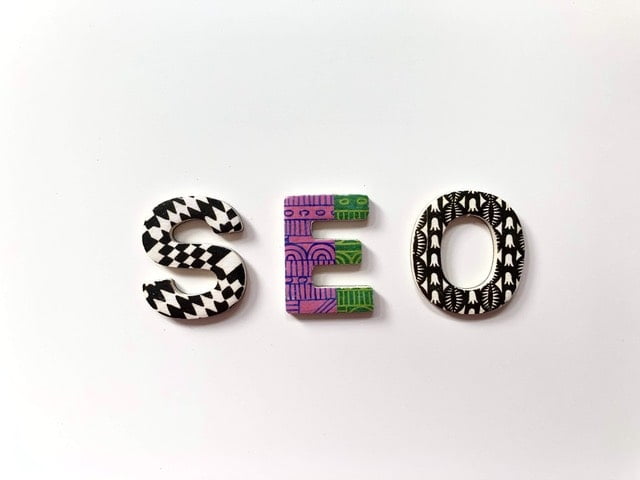First of all, you have to make sure your site meets standards and provides quality content.
In fact, On-Page SEO means that everything on your website is optimized.
After all, if you have lots of visitors, but your content sucks, On-Page SEO is a waste of time.
But don’t worry, this Quick Guide will show you how to set up the foundations for your site.
If you have quality content and follow these simple Guide, you will be able to:
- Get lots of visitors
- Generate more leads
- Make more sales
So, let’s dive right in.
Create Engaging Content
The biggest aspect of your On-Page SEO is to make sure that your site provides quality content.
You also have to make sure, that your readers are interested in your content. If you create content, that nobody wants to read, it will ruin your whole online business in the long-run.
For example, if you’re selling men’s leather shoes, you need to figure out what the interests of these customers are.
Your content can be blog posts, product descriptions, infographics, videos and so on.
I definitely recommend to set up a blog and pitch some AMAZING blog posts.
Get Content Ideas
Before you create your content, note some relevant topic suggestions.
But how do you do that?
Easy.
Head over to Ubersuggest and type in your main keyword.
For Example men shoes.
Her you go:
Ubersuggest shows you the search volume, SEO Difficulty, PPC Difficulty and CPC.
For a small business, it would probably be impossible to rank in one of the top positions for this keyword. But Ubersuggest provides hundreds of keyword ideas that are not much easier to rank.
If you don’t want to spend much budget on an SEO Service, please choose a topic that has a lower SEO Difficulty than 30.
If you do this, you will be good to go, get good google rankings and some traffic 😉
Quality Of Your Content
You’ll also need to make sure that you are producing high-quality content.
If your content sucks, readers will abandon your site as soon as they get there. And this shows Google that you have low-quality posts.
Instead, your page (specifically your blog posts) should be providing some value. For example, you can write a post about how to take care of leather shoes.
You could also create a post on how to choose the best leather shoes for different types of men.
If you want more ideas head over to Answerthepublic. This tool will show you the typical questions of customers.
In fact, you have to provide very good content.
Use Images and Videos
According to Hubspot, video improves traffic by 157%. That’s because Google wants the visitor to have the best experience possible.
Only having plain text on your site is not attractive. Different people learn differently. That’s why you should use text, video, and images in your blog posts.
Embed some infographics, like this infographic about top Amazon Stats from smart minded , or this infographic about E-Commerce Stats from smartminded.
If you do this, you provide a lot of value to your readers and that’s noticed by Google.
Technical SEO
I know, that’s the boring part, but it’s also important.
For the beginning, you have to keep in mind the following five points:
- Crawling
- Title-Tags
- Meta-Description
- Page Speed
- URL
Luckily, there are lots of software that can help you with technical SEO.
Crawling
Head over to Semrush and create a free account. Check your website and the tool shows your website’s errors and issues.
If you’re familiar with HTML, you can easily fix the most problems by yourself, otherwise, head over to Upwork and hire a freelancer, who is specialized in On-Page SEO.
Title-Tags
Your title tag is like a newspaper headline. They tell Google what your page is about.
Make sure that you include your main keyword in the title tag. Otherwise, Google won’t know what your site is about and your content Creation was just a waste of time.
Headings
You should only use one H1 (or title) for each blog post or page. It’s also recommended to use subheadings (H2, H3, etc.) in your posts to make it easier to read.
Include your keywords in the headings.
Meta-Descriptions
Not only your title tags, but also your meta descriptions are important.
This is what Google shows underneath your title on their SERP.
What can you do?
Easy. just make sure you also include your main keyword and a few others here and you will be good to go.
Page Speed
This is also a user experience aspect. If your website is slow, your visitors will likely abandon your site.
The faster they abandon your site, the lower Google will rank you. Increasing your site speed is very important for user experience and also for Google rankings.
URL
You also have to make sure, that your main keyword is included in the URL.
For example, if your topic is “How to do SEO,” your URL should not be website.com/0754457854.
Instead, name your URL like this:
website.com/how-to-do-seo.
But be sure to always keep your URLs short. I recommend using a maximum of five words.
That was the Quick Guide To On-Page SEO For Small Businesses!
This was the Quick Guide To OnPage SEO for Small Businesses. Of course, there is more to consider if you really want to take your SEO game to the level.
However, I hope that I could give you an insight on how On-Page SEO works.
Everything you need to know, you can find on our Blog goodtoseo.
About the Author
Moritz Bauer studied Industrial Engineering at University of Constance in Germany and is passionate about ECommerce and Online Marketing. In these times he writes engaging articles about Amazon FBA on his blog smartminded.

